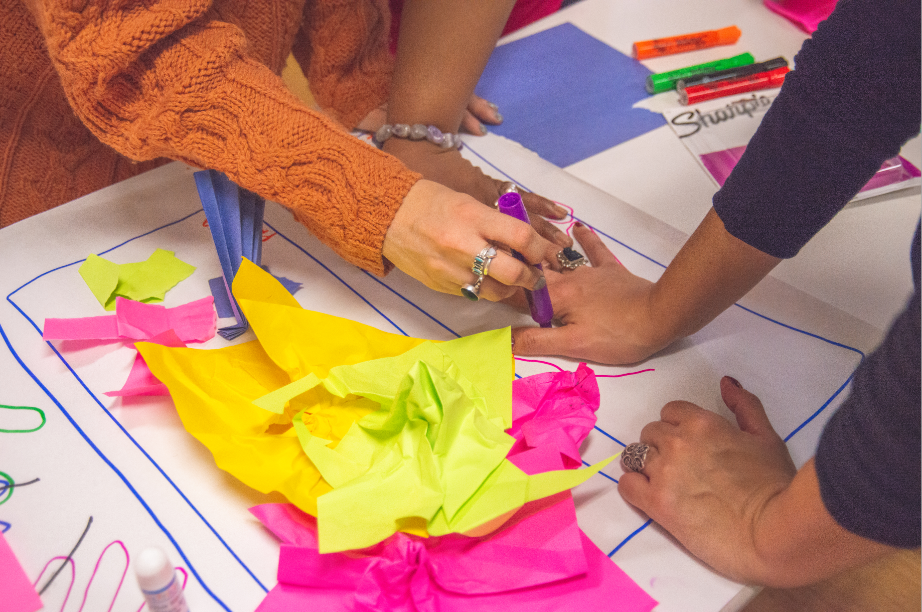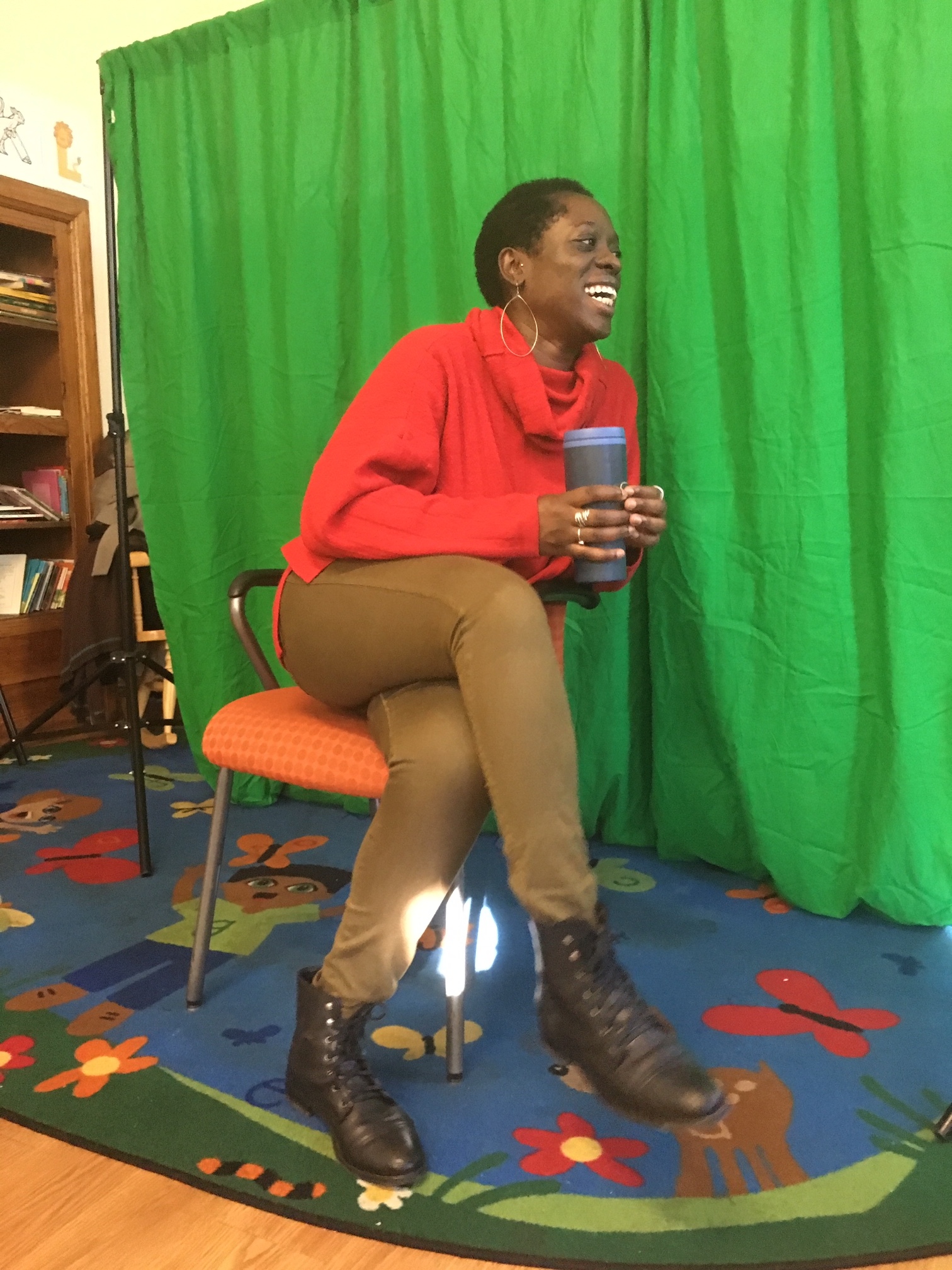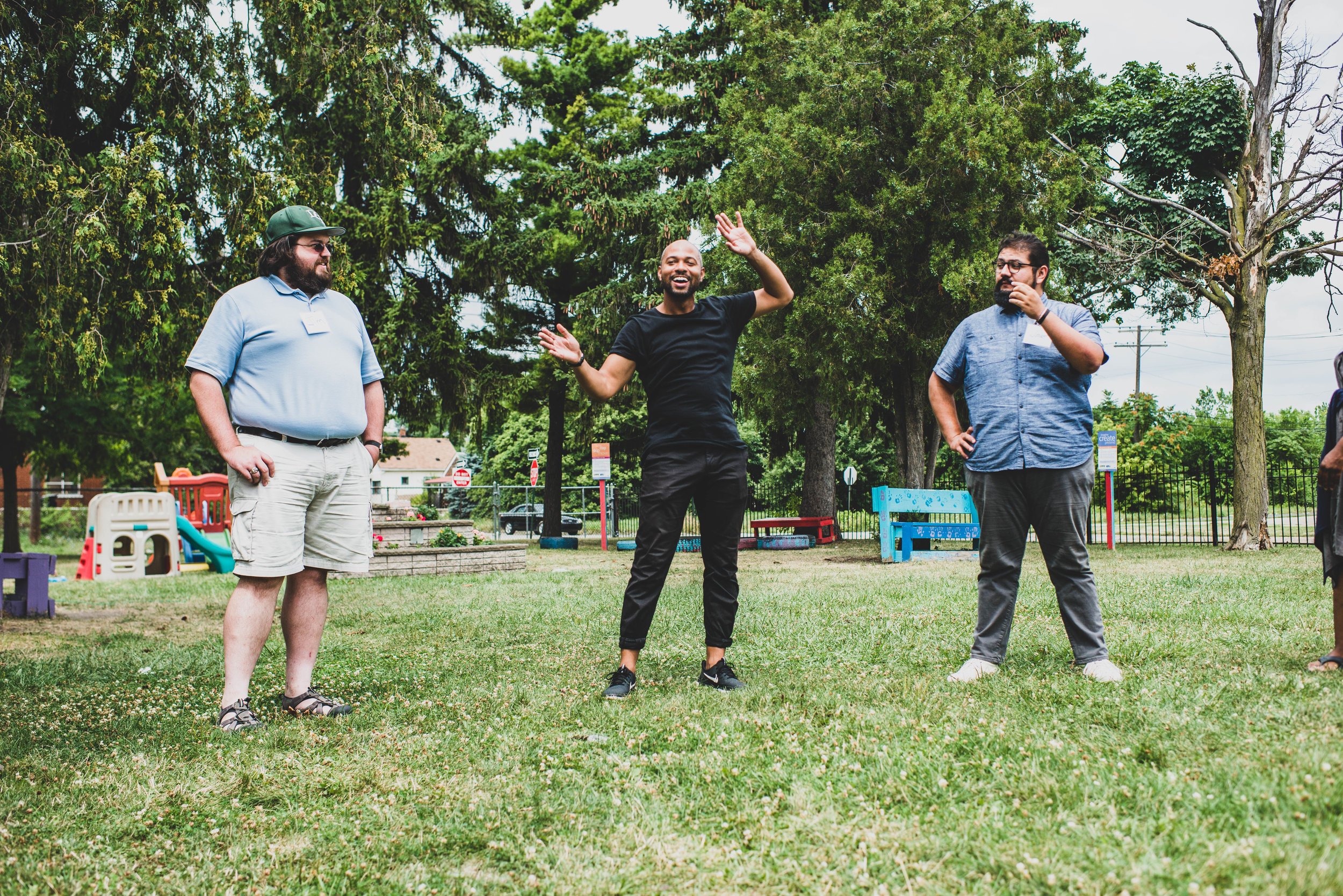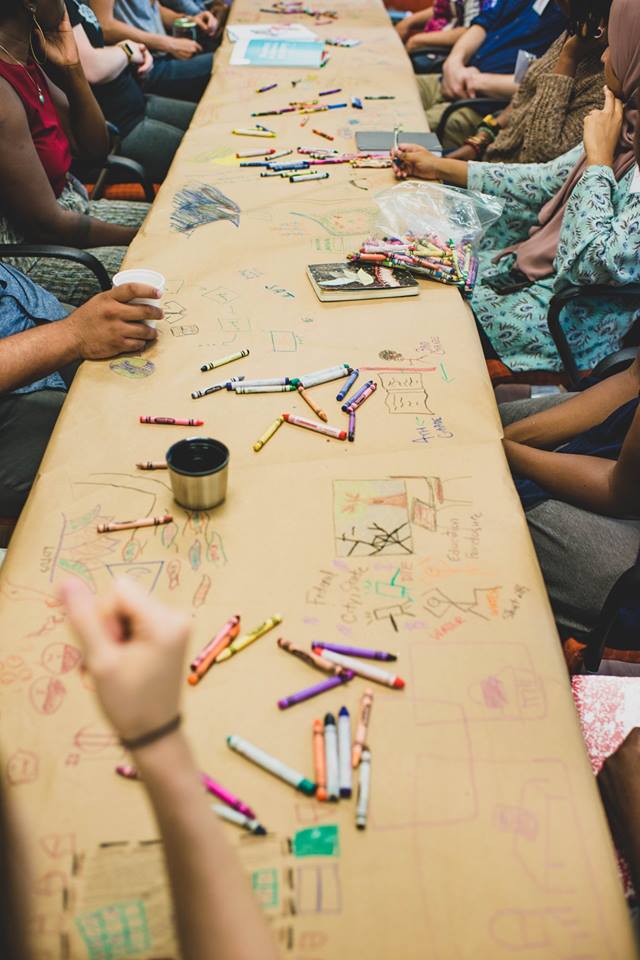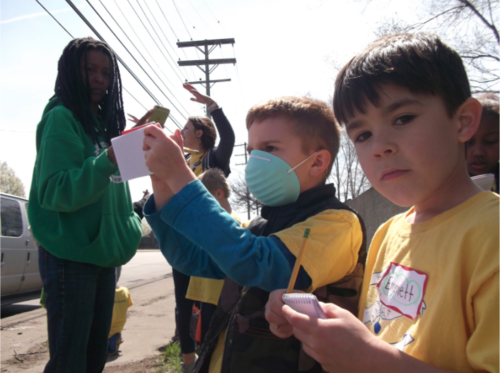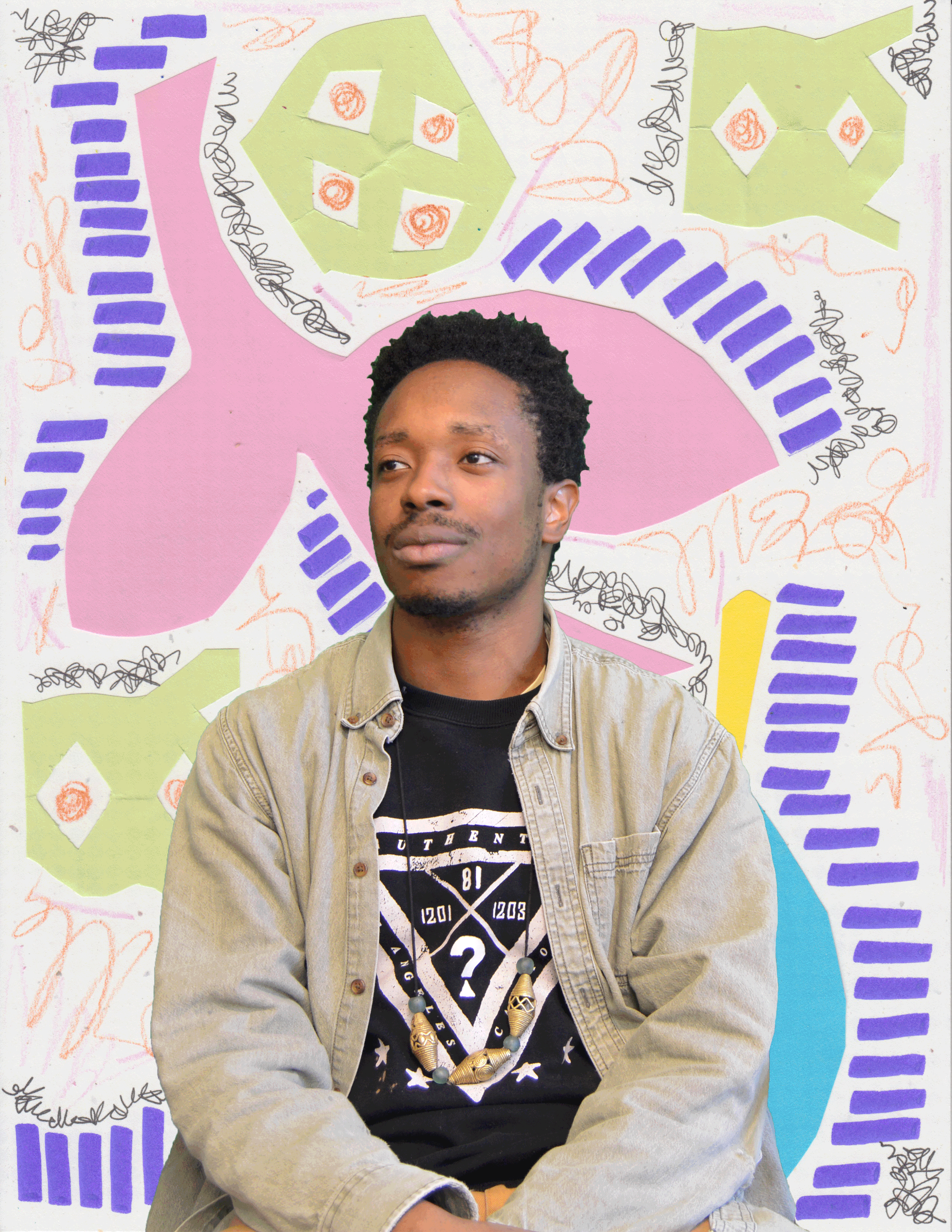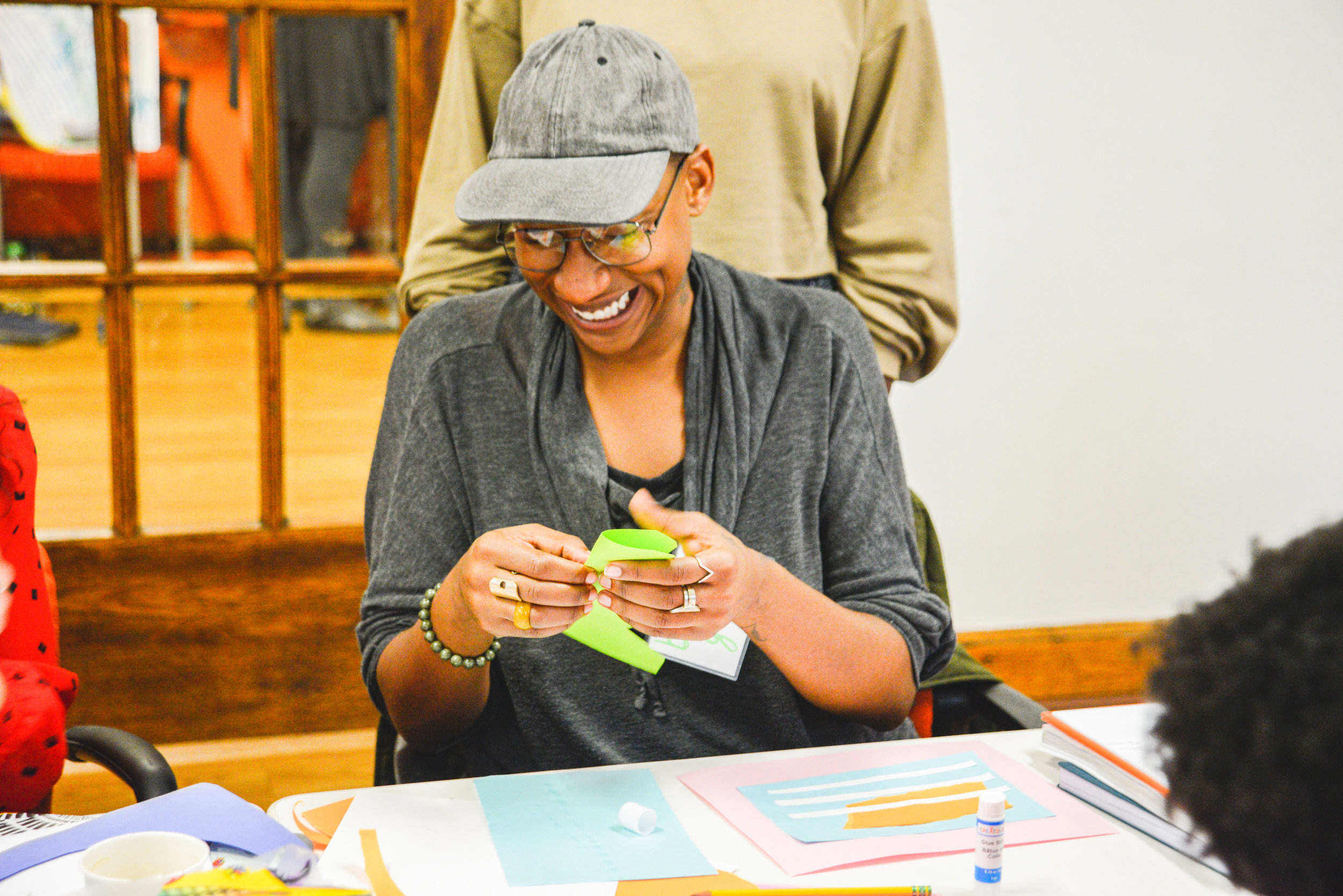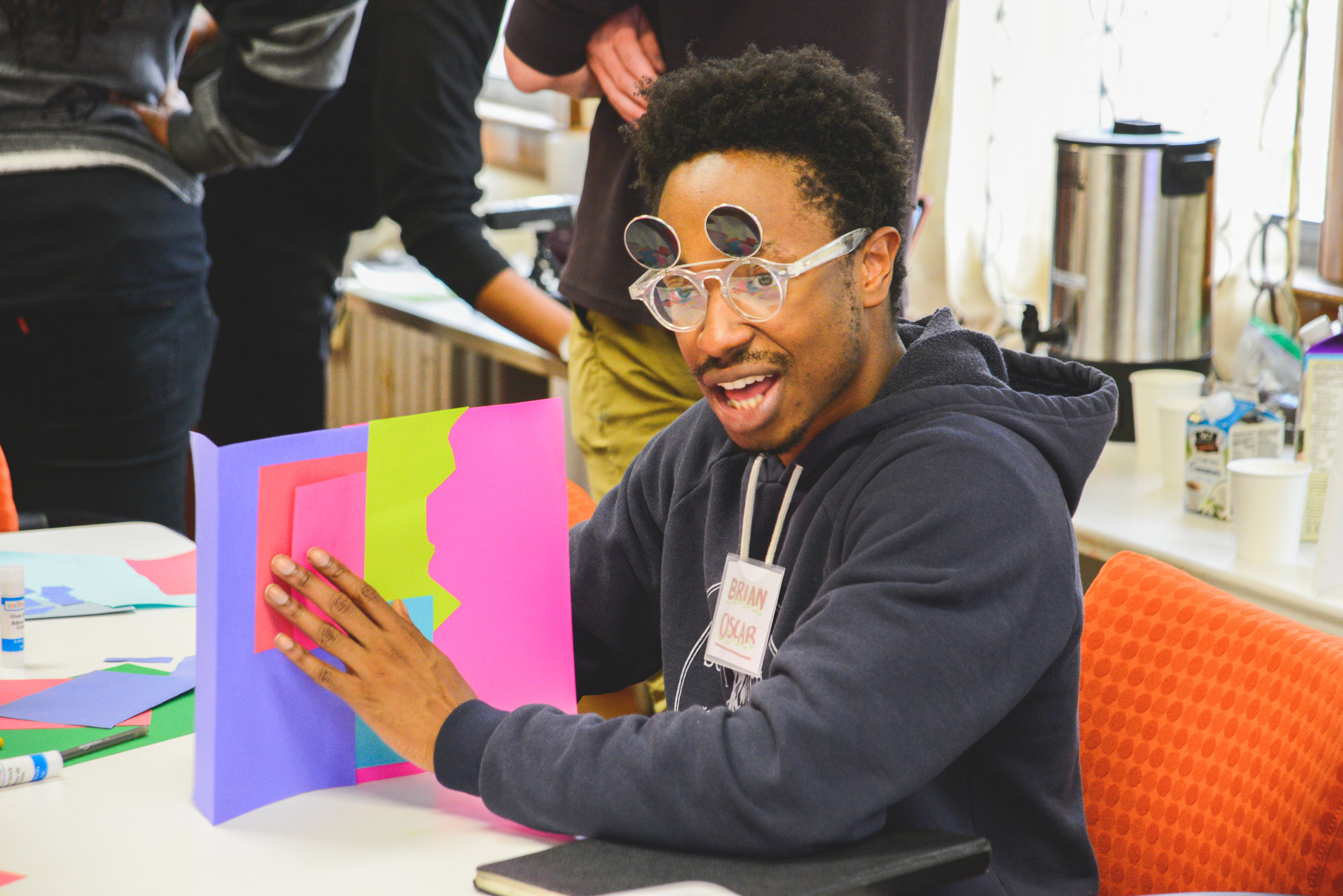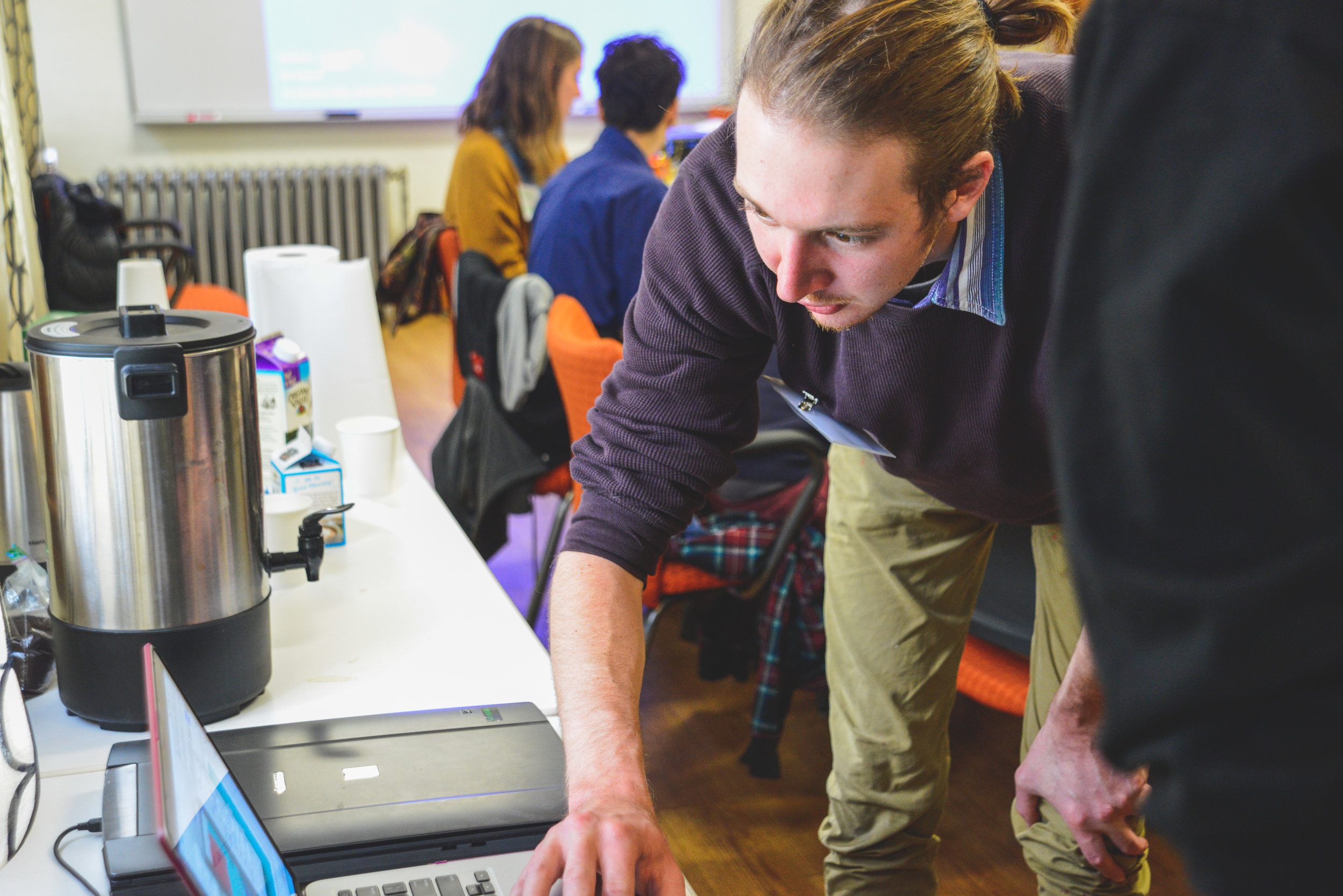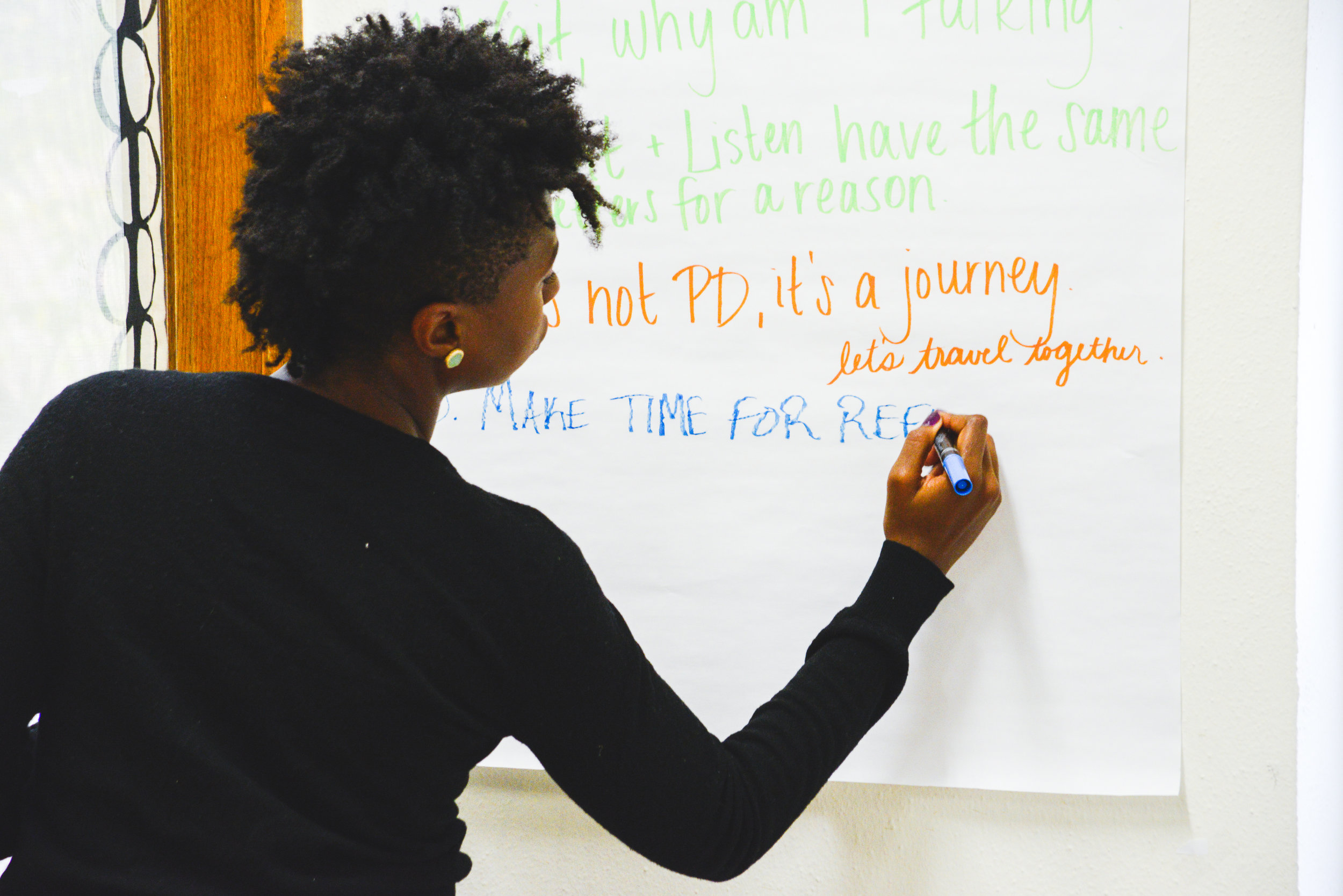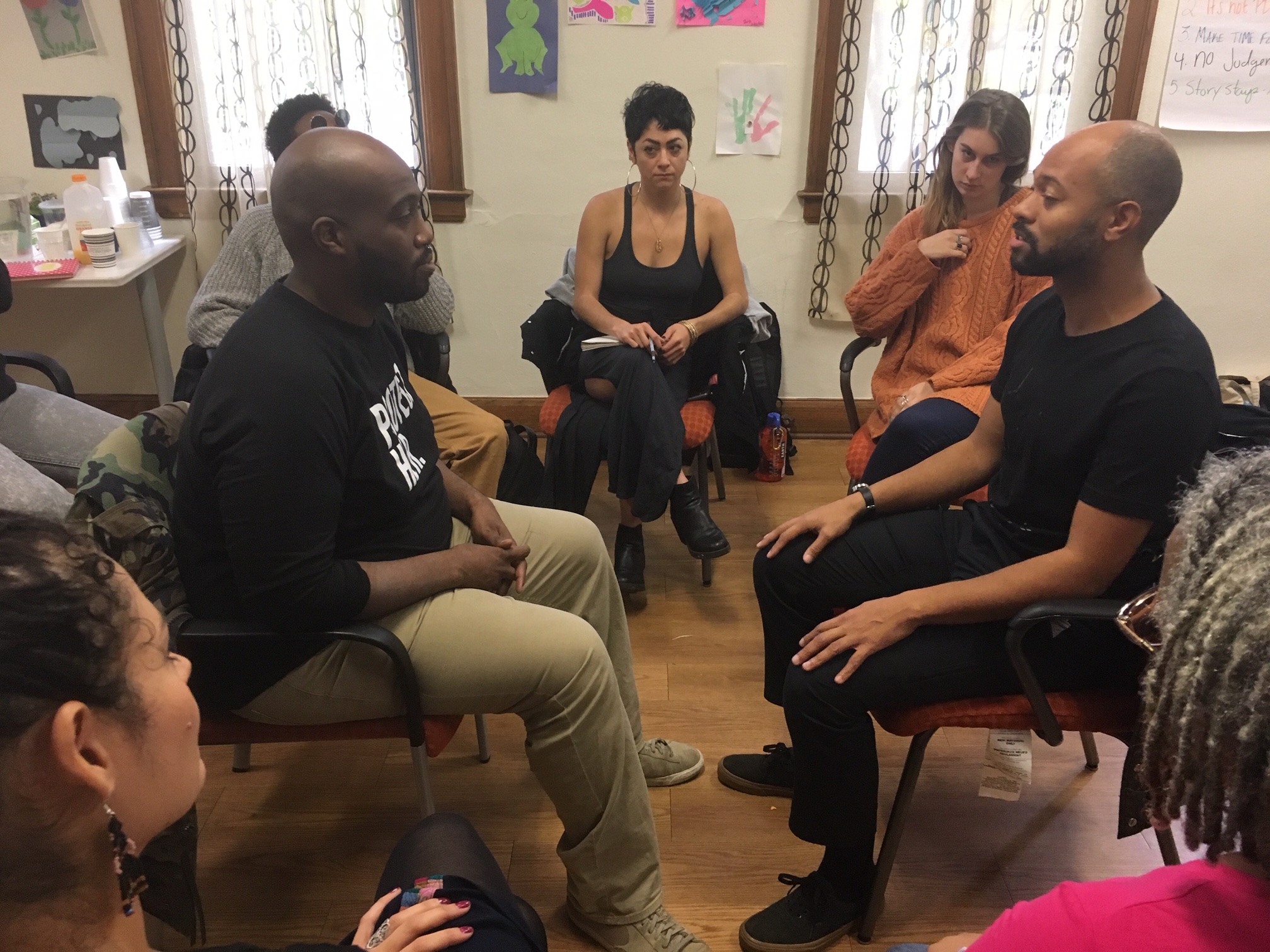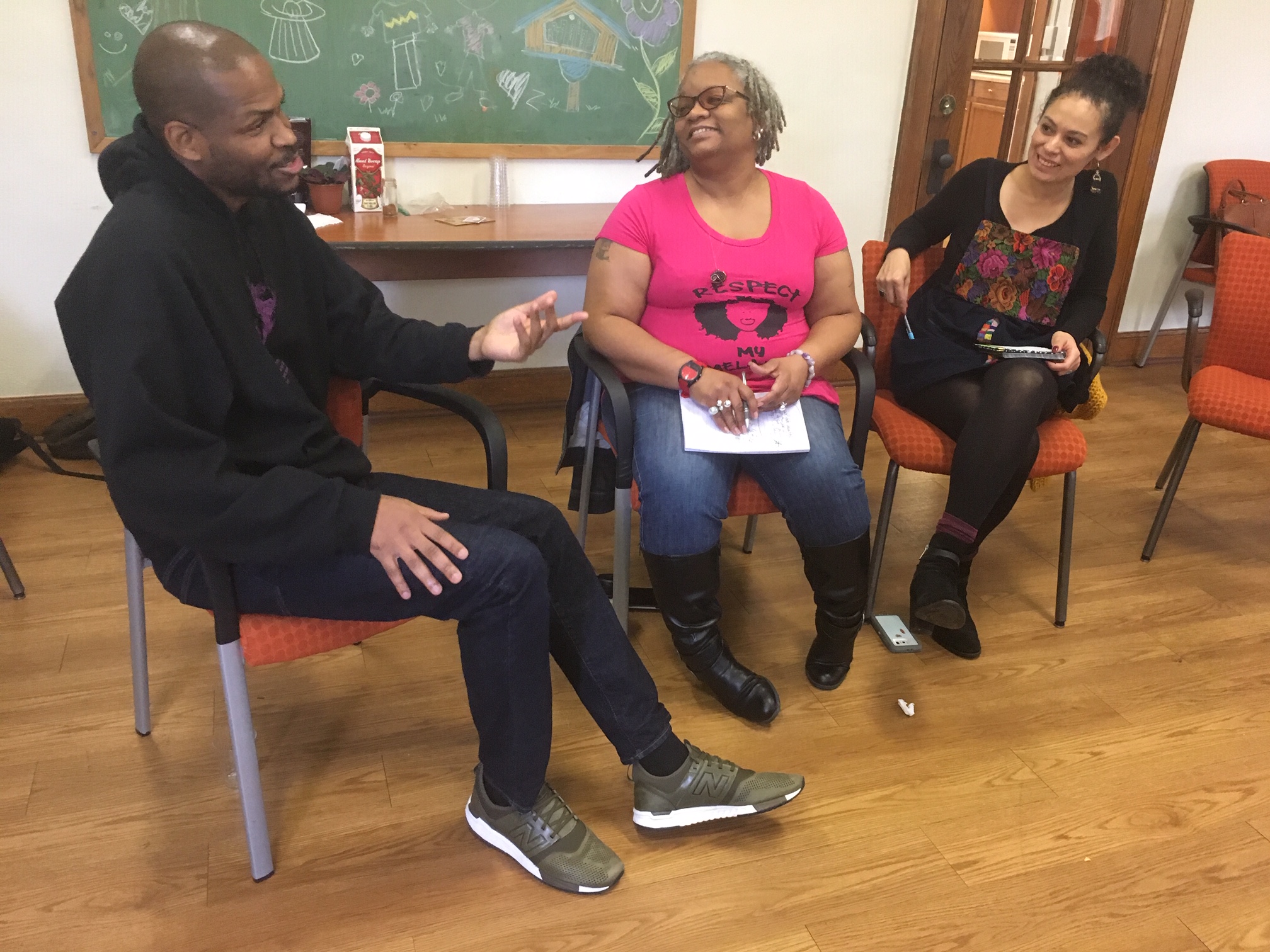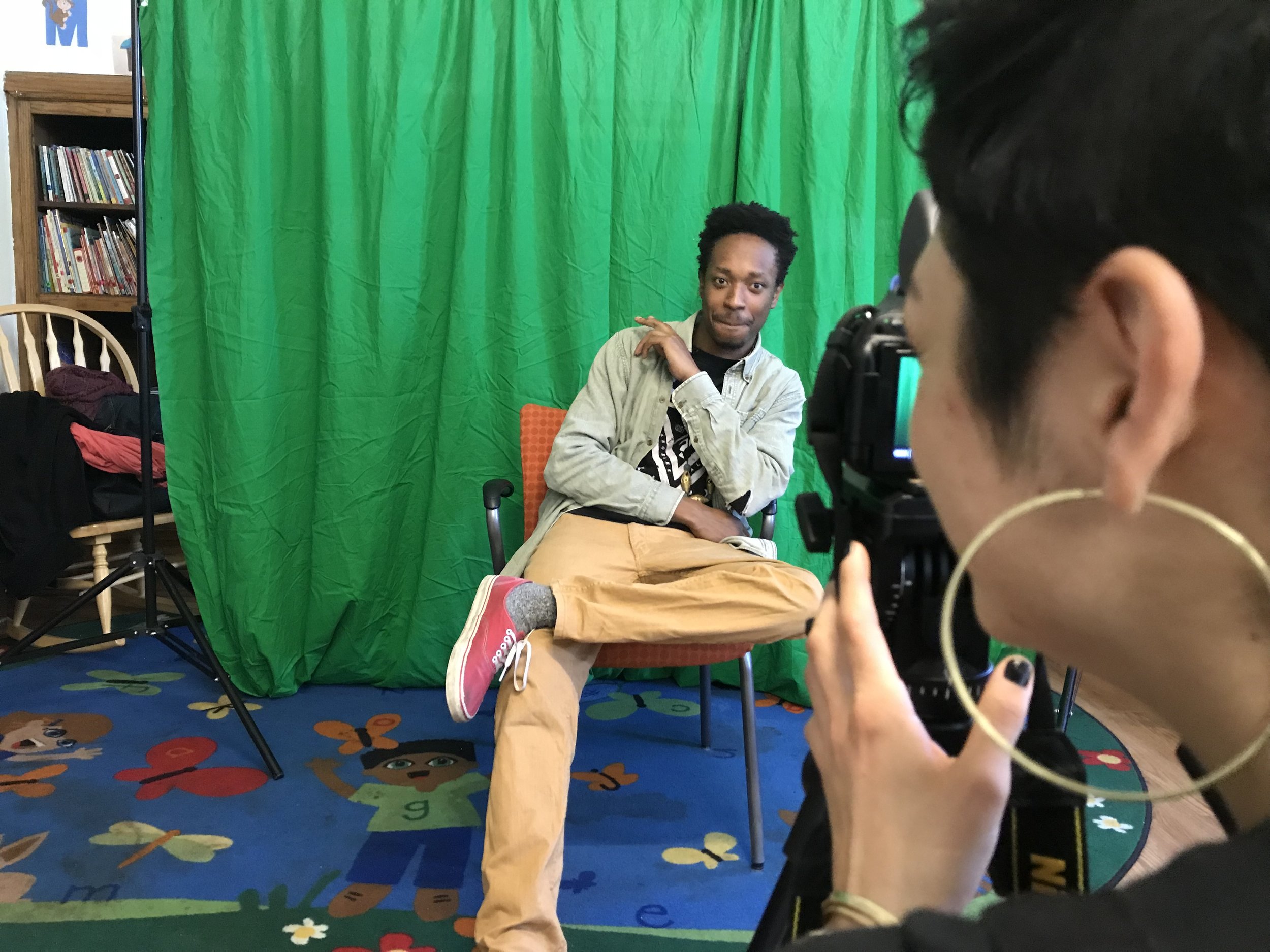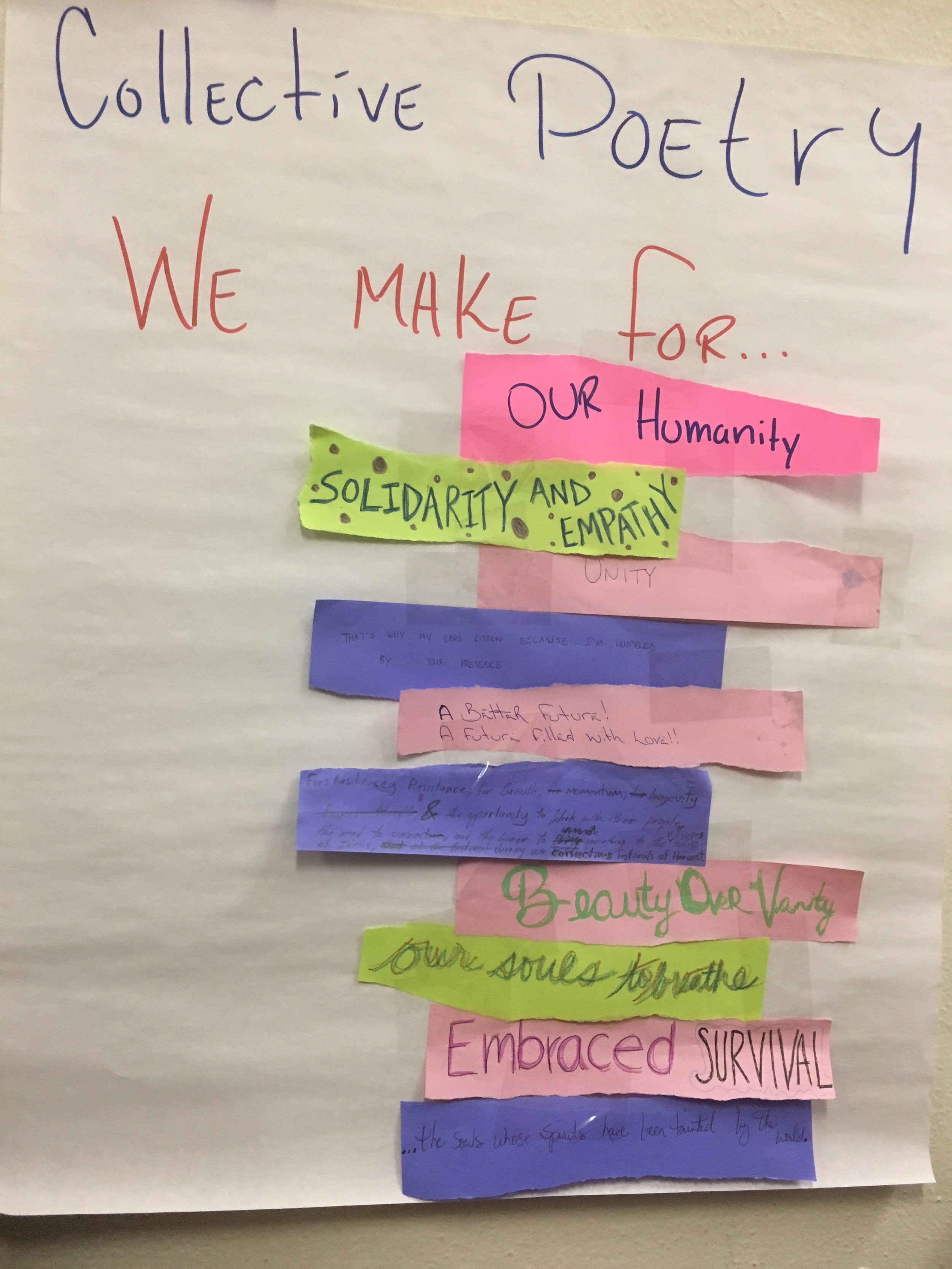The glow up is real.
A year ago, we were at the very start of a new journey. We had a new name and a refined mission, and we were excited about the work we were doing.
We also came up against some real challenges of not having a team, funding or the support we needed to build on that work. We were understaffed and overwhelmed, so much so that we had to postpone one of our key programs. We moved out of our long-term home at Allied Media Projects, into a new space where we had few connections. So much was new and unclear, but I am proud to say that we have grown from many of those challenges and now we are doing our best work ever.
I want to take a moment to highlight some of our achievements from this year.
We put the people in PIE.
After many years of work, we’ve finally built a team of people here to support our mission. Our new Fundraising and Communications Assistant is making waves in our grant, social media and email communications channels. And our artist-in-residence (AIR) work has been expanded and streamlined thanks to our new AIR Coordinator. Growing our administrative capacity has allowed us to launch new and improved programming.
Trash life: We produced riveting, zaney media
Trash Life has been our biggest media release ever! The film was created during the 2016/2017 school year by The Painted Turtles, a classroom of first and second graders at the James and Grace Lee Boggs School. Their teacher Kelly Rickert and PIE teaching artist Matt Daher facilitated the filming process along with PIE Arts Assistant, Ever Bussey. This past spring PIE showcased Trash Life at Cinema Detroit, and over 100 people — family and friends — came out to see their work and hear their experiences during a panel after the screening. This was an outpouring of love, and we’ve never been able to screen a media project at this scale! The film has gone on to be screened at Allied Media Conference and the Place-Based Education Conference at Eastern Michigan University, and it’s just shy of 500 views on YouTube. Our work with Trash Life has set a new standard for how we put media into the world!
pie lab: We started something new
This fall, we launched our very first PIE Lab, a training for Artist Educators to cultivate skills for facilitating collaborative art projects. Training artists to be facilitators has been a profound need at PIE and at other arts education projects. At PIE, we are uniquely suited to provide that training, between our eight years of hosting artists residencies and our experience of facilitating trainings for educators. PIE Lab yielded even more learning and some amazing, collaborative media — check it out here! We’re excited about this beautiful community we’ve created and we look forward to offer it again in years to come.
“To meet and plan with like minded teachers offers various perspectives in a safe and welcoming environment while allowing participants to truly flourish.”
We renewed and refined what we know and love
OMG! I mean have you seen our 2018 programing!? It’s fire! This year we’ve refined both our teacher training -- the Rida Institute -- and our artist residency, allowing us to train the largest Rida cohort since the first year we launched it. With our AIR program, we are exploring one theme across all three projects: school lunch. We launched the artist residency this fall with our first community partnership at Alternatives For Girls and we’re excited get to work.
It Ain’t Over
This is still the beginning of our journey, but we have made significant strides and we’re more clear about how we want this work to grow. At the start of 2018, we set out to grow through relationships with operation PIE Pals, and this is just what we’ve done. In 2019, we will make media that creates a platform for our young people to tell their stories about schooling. We will continue to facilitate spaces for artists and educators to connect to their personal purpose and develop relationships that celebrate and support them through questions or burnout. Our work to humanize schooling is a commitment to change that happens through people, and we want to make media and spaces that honor people-centered transformation.
Our work wouldn’t be so dope without our community -- our woes -- showing up, coming through, liking, reposting and just sending good vibes. Thank you.
We’re excited to do more and we hope you are too! Give to PIE, and help us continue to create humanizing classrooms.
Thank you for your support, in thought and in deed.
N8
Director, People in Education




